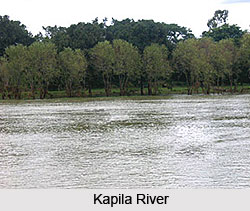 In its course through Karnataka, the channel is broken up by twelve "anicuts" or dams for the reason of irrigation. From the anicut at Madadkatte, an artificial channel is diverted at a distance of 72 miles, irrigating an area of 10,000 acres and ultimately bringing its water supply to the town of Mandya.
In its course through Karnataka, the channel is broken up by twelve "anicuts" or dams for the reason of irrigation. From the anicut at Madadkatte, an artificial channel is diverted at a distance of 72 miles, irrigating an area of 10,000 acres and ultimately bringing its water supply to the town of Mandya.
Near Srirangapatna, there is an aqueduct, called the Bangara Doddi Nala. This nala, which was, build in the 17th century by the Wodeyar maharaja of Mysore, in the memory of his favorite consort, Ranadhira Kantirava. It is said to be the only aqueduct where the water from a river, tapped upstream, is carried by the aqueduct over the very same river few miles downstream. This aqueduct also served as a motor able bridge until 1964.
Other than providing many ancient and modern canals with water from the river for irrigational purposes, the Kaveri also serves as the main drinking water resource for several towns and villages in the region. The cities of Mandya and Mysore depend mostly on the Kaveri for their drinking water supply. While its course in Karnataka, the river is called Jeevanadhi meaning a river supporting life.



















